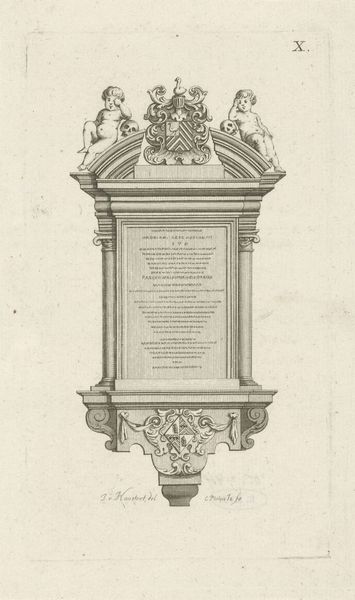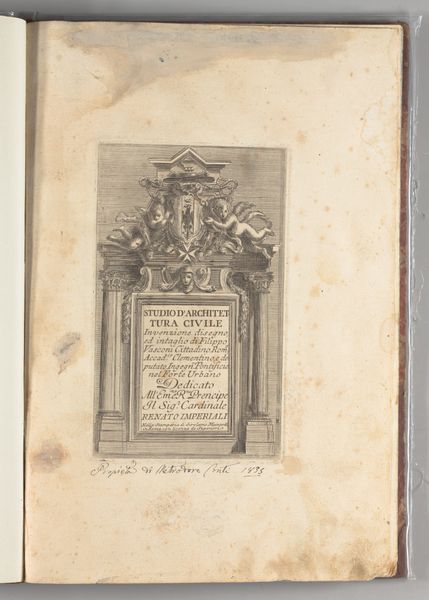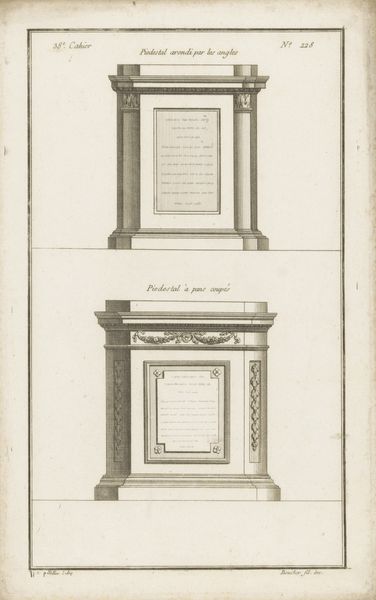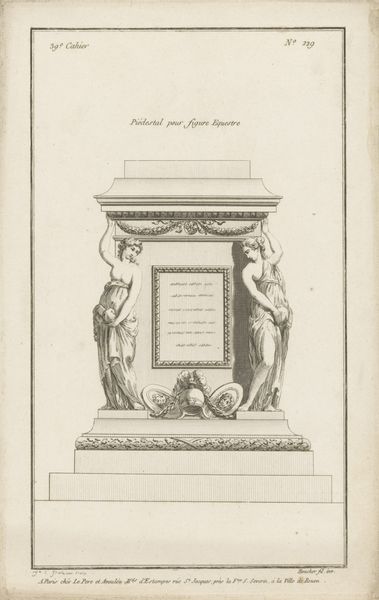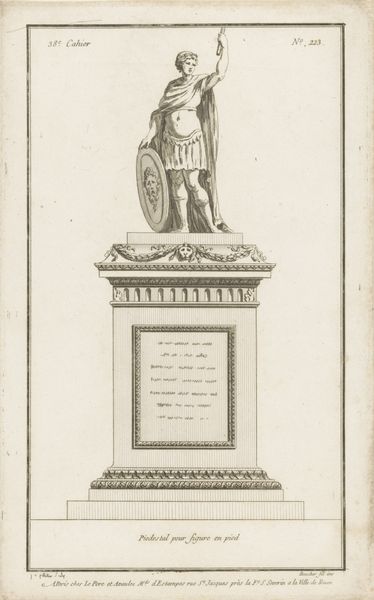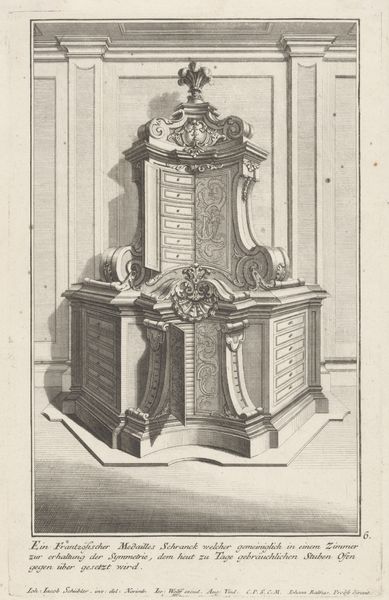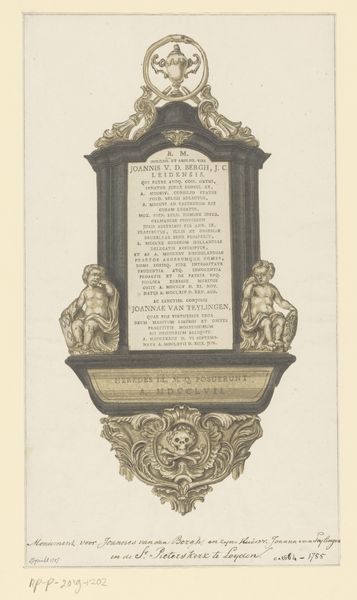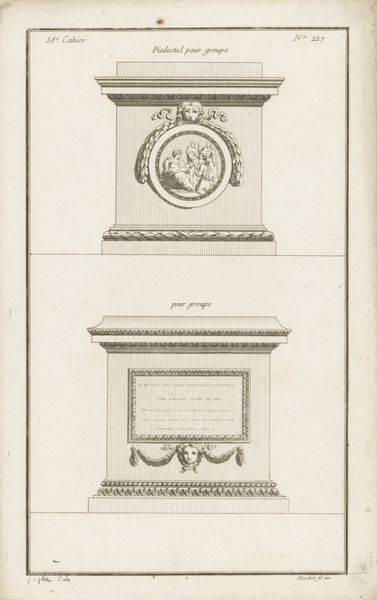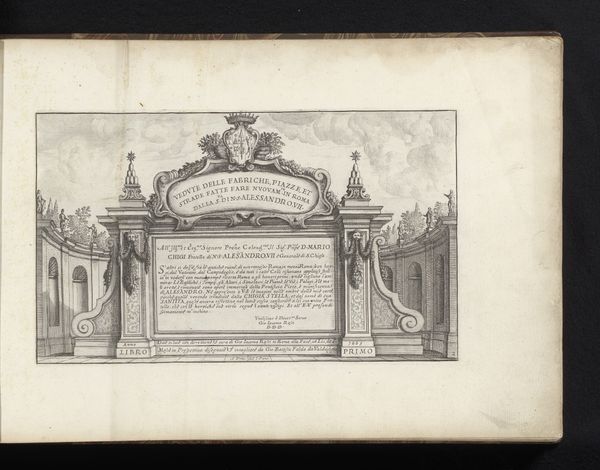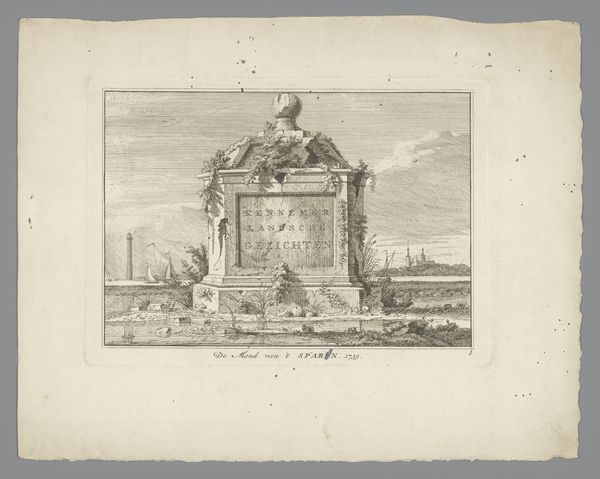
Titelprent voor de prentreeks: Afbeeldingen van den Schouwburg te Amsterdam, 1774 1774
0:00
0:00
print, engraving, architecture
#
neoclacissism
# print
#
old engraving style
#
history-painting
#
engraving
#
architecture
Dimensions: height 332 mm, width 253 mm
Copyright: Rijks Museum: Open Domain
Curator: This engraving from 1774 is entitled "Titelprent voor de prentreeks: Afbeeldingen van den Schouwburg te Amsterdam" and it comes to us from Reinier Vinkeles. It's part of the Rijksmuseum's collection. It shows a detailed architectural structure, seemingly a monument or pedestal. What strikes you first about this work? Editor: Its monumental severity. The linear precision in the rendering, especially with that faux woodgrain background, creates a somber tone. It’s more architectural plan than celebratory image, wouldn’t you say? Curator: I can see that. For me, I think about how such images were disseminated. This was intended as the title page for a series of prints about the Amsterdam theater, placing this institution in a longer, grander tradition, evoking the theaters of antiquity with its neo-classical design. Editor: Yes, but there's also a flattening effect, isn't there? It adopts Neoclassicism – referencing the antique to give authority, but the effect is stilted. The symbolism, the cherubs and draped fabric… they lack the dynamism you might expect. Is it about glorifying the *idea* of theater rather than its reality? Curator: Perhaps. Look at how text is centralized in the composition. The words describing the theater’s architects are framed within that structure. I think it says that theatre's value lies not just in entertainment but in the civic structures it reflects and upholds. Theatre as a foundation for social order. Editor: And yet… the monument feels rather… empty, doesn’t it? Those architectural follies, with nothing actually happening around or in them, tend to signal impending obsolescence to me. What good is tradition if no one's breathing life into it? Curator: That's a compelling thought. The rigidity could reflect anxieties about cultural relevance even at that time. Maybe that embrace of Neoclassicism wasn't just an homage, but a desperate attempt to legitimize the theater's role. Editor: Or perhaps it highlights how institutions constantly perform for authority, displaying rather than truly embodying ideals. This title page serves as a testament to the cultural pressures imposed onto theatre, then and now. Curator: Indeed, Reinier Vinkeles' image isn't merely a depiction; it's a carefully constructed statement about theater's place in Amsterdam's cultural landscape. A fitting point to reflect on, wouldn’t you agree?
Comments
No comments
Be the first to comment and join the conversation on the ultimate creative platform.

